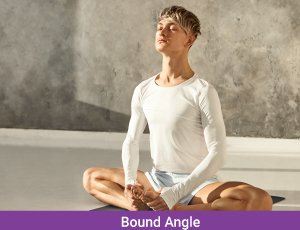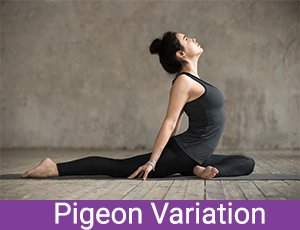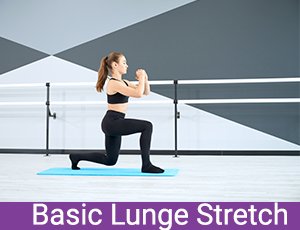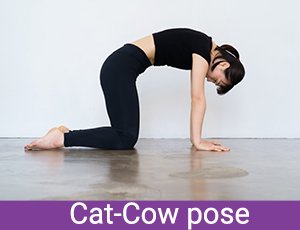10 Most Important Stretching Exercises for Young Athletes
It is easy to say that athleticism is a quality that everyone can have. In fact, people, nowadays put “athletic” as an attribute on their social media. However, the reality is that it takes hard work and a lot of injuries to reach the point of calling yourself a true sportsman. A person who is very much into getting involved in any kind of sport that requires physical exertion is more prone to injuries than success. This is the reason that exercises for young athletes are an important process to avoid injuries during a sports match. One may not be successful in every match but getting out healthy at the end of the match gives them a chance to participate in forthcoming opportunities. Young athletes’ exercises are more praised because young people are up for a carrier in sports and their dreams should not be hindered by mere injuries.
What is there for a sportsperson from young athlete’s exercises?
These exercises not only provide core stability, strength, and activeness but also provide the most important quality which is flexibility, to be prevented any kind of muscle tear or soreness after the match. Young athlete knows the importance of getting involved in stretching exercises to open their body movement for more rigorous activities. However, what they don’t know is the benefits of performing these stretching exercises after a match or a session of professional exercises.
What should you keep in mind before doing any of these exercises?
Exercises for young athletes themselves require some kind of bodily preparation. This, most importantly, includes letting your body know that you are about to get involved in some physical activity. You can do this by simply walking quickly or even jogging to get your body warmed up. Also, you must also keep in mind that when you are stretching, you are not in a competition. So, follow your body while stretching by not pushing any of the stretch positions as this irresponsible push can cause your muscle to be strained. Lastly, your muscles do get strengthened because of exercise but if there is an injury in your muscle, these exercises may not be suitable for you. This is because a tear in a muscle can become worse because of uncalculated movements and you can only know the type of exercises and their levels suitable for you from a professional physical therapist. All these things are very important to know in order to really benefit from young athletes’ exercises.
What are some of the most effective stretching exercises for athletes?
Bound angle
This stretching exercise is also known as butterfly stretch in which you have to put your feet together and grab them while leaning forward. This exercise stretches out your groin and lower back

Seated cross shin
Also known as sitting Indian style, this exercise involves crossing your legs while leaning forward and trying to touch your elbows to the ground. You can start this exercise by only touching the ground with your hands and slowly pushing down your elbows. This stretching targets the IT band and the glutes in the legs that are crossed underneath.

Seated straddle
This stretching is the best exercise for developing flare. In this exercise, you have to sit down a while back straight and keep your legs apart. After then you are required to lean side to side to each of your feet. This exercise stretches the hamstrings, groin, and lower back

Pigeon variation
Bend one leg in front and put one leg out the back while arching your back or leaning forward. You should keep in mind to not push yourself too hard into this exercise. This is one of the exercises for athletes that stretches out the hips and effectively targets the IT band

Seated forward fold
This basic sit-and-reach exercise requires you to sit and keep your both legs in front of you while you try to reach the toes with your hands

The saddle
Sit on your bended legs while trying to go down from behind. At first, you can choose to go just to the point where your hands touch the grown behind. When you develop more flexibility, you can go down to your elbows or all the way down on your back. This exercise targets the quadriceps.
Basic lunge stretch
This exercise stretches the hip flexors on one side and the hip extensors on the other as you stand and then bend your one leg forward 90 degrees while stretching the other leg behind. Remember to do this stretching on both legs.

Deep sump squat
Good for mobility and flexibility, this exercise also decompresses the lower back. In this exercise, you have to sit in a squatting positing while trying to keep your joints stacked

Twisted cross
This exercise for athletes helps them to stretch out the front delts, the biceps, and the chest. In this exercise, you have to lie belly down while keeping one arm straight sideways on the ground. By the other arm, you have to push down by hand and twist your body on the former arm
Cat-Cow pose
This exercise is good for spinal mobility and preventing injury. This is more of a mobile moving pose rather than a static stretch. In this exercise, you have to sit on your hands and knees. In this position arch, your back and then hunch in and out

Conclusion
You, as an athlete, usually see a physiotherapist modify your training as a result of an injury or any kind of soreness because you are keen to get back at training as soon as possible. In reality, the injury you sustain is because of your body’s inability to deal with the pressure you have put on it. In this position, you can either reduce this stress on your body, which as an athlete you won’t, or you can involve in these exercises for young athletes to increase your body’s ability to deal with the training load. For the latter, you need to get in touch with a professional physiotherapist such as Dr. Niraj Patel, to access you and work on your weak parts.
To know more about us, contact Om Physio Plus Nutrition

